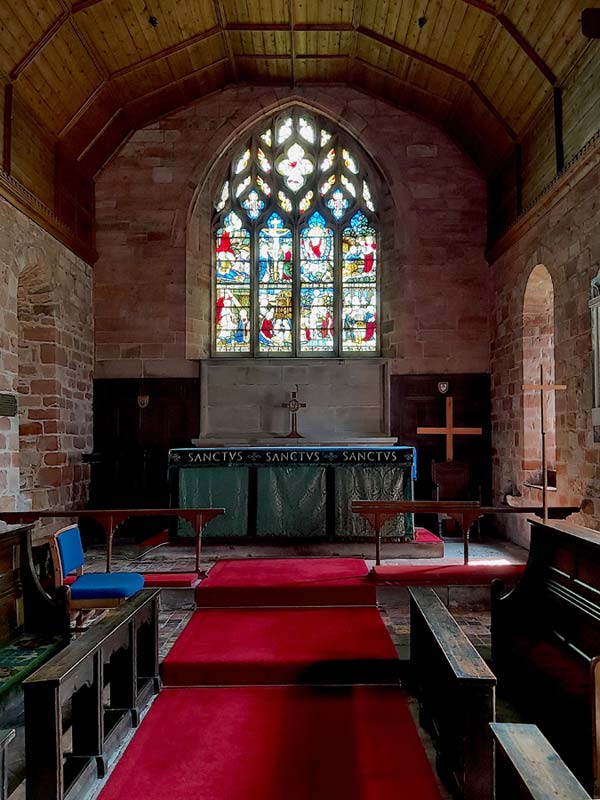 |
This view looks in to the Chancel, with the choir stalls either side and the Altar standing below the East Window. In front of the Altar is the Communion Rail
The altar rail (also known as a communion rail or chancel rail) is a low barrier, sometimes ornate and usually made of stone, wood or metal in some combination, delimiting the chancel or the sanctuary and altar in a church, from the nave and other parts that contain the congregation. Often a gate, or just a gap, at the centre divides the line into two parts. Rails are a very common, but not inevitable, feature of Roman Catholic, Anglican, Lutheran, and Methodist churches. They are usually about two feet 6 inches high, with a padded step at the bottom, and designed so that the wider top of the rail can support the forearms or elbows of a kneeling person.
The altar rail is a modest substitute for earlier barriers demarcating the chancel, the area containing the altar, which was reserved (with greatly varying degrees of strictness) for officiating clergy (including boys as choristers and altar servers). Although it only emerged after the Protestant Reformation, it has been found convenient by both Roman Catholic and more traditional Protestant churches (such as the Anglican, Lutheran and Methodist churches), although it is disliked by many Reformed and nondenominational churches.
©peh

